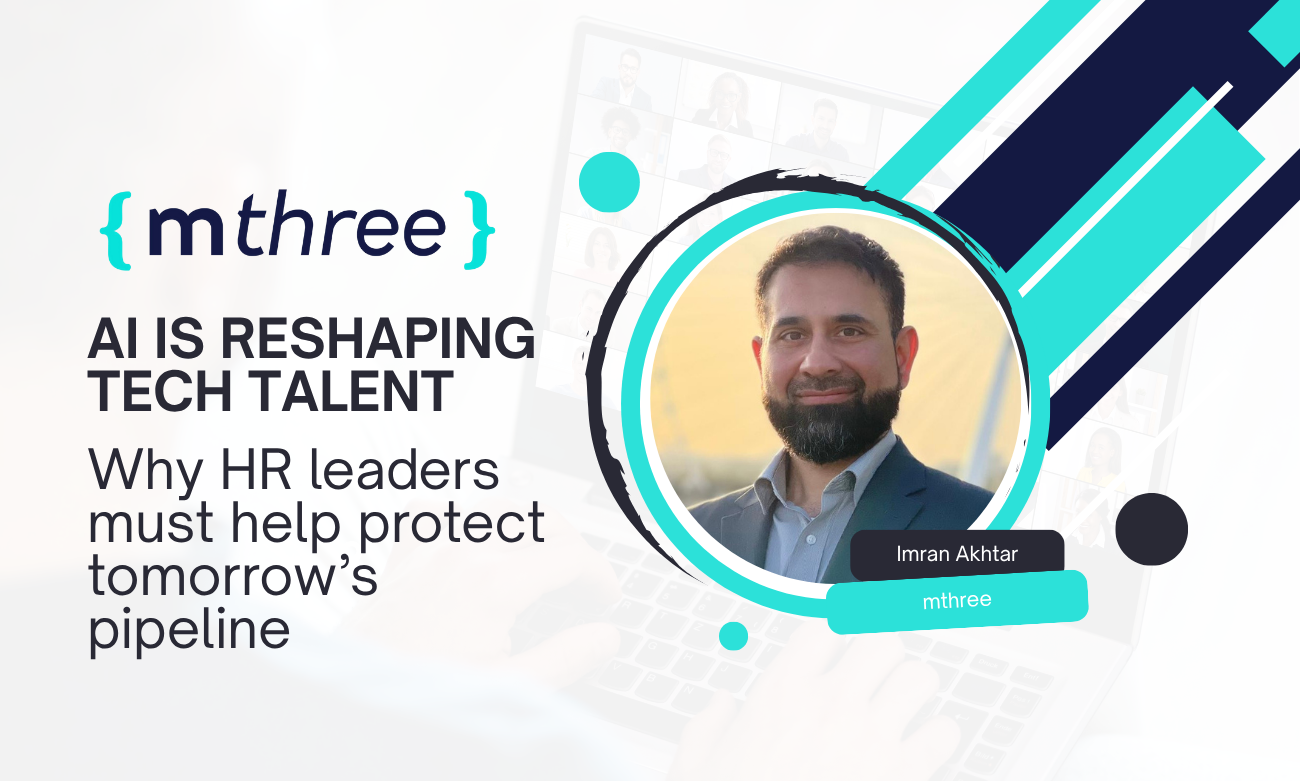AI is rewriting the rules of the workplace - and perhaps nowhere is that more evident than in technology teams. Whether you’re in banking, the public sector, or a dedicated tech firm, automation and AI tools are reshaping how work gets done, who gets hired and which skills are in demand.
But despite speculation that AI is increasingly making developers, for example, redundant, demand for software development and production support remains strong. The real shift is in what organisations look for when hiring and how they build resilient, high-performing and future-ready teams.
The changing profile of tech talent
AI is certainly making an impact, from streamlining many technical tasks to code generation and also analytics. Developers can now produce clean, functional code more quickly, while many data teams can generate insights without building complex models. Yet this efficiency brings a new set of challenges.
As AI takes on more repetitive tasks, employers are placing greater emphasis on aptitude, curiosity, problem-solving and communication. These are qualities that underpin adaptability - which will be essential as technology continues to evolve. HR leaders must recognise that technical skills are now often the baseline, not the differentiator, when it comes to recruitment.
The danger of shrinking junior intakes
Some organisations are using AI efficiency gains as a reason to scale back graduate and entry-level hiring. On paper, this seems logical: smaller teams delivering more output. But this approach risks creating a top-heavy workforce with no one to replenish it in the years to come.
Without a steady flow of early-career talent, companies risk short- to medium- term capability gaps. For example, they may lack the mid-level professionals needed to maintain systems, lead projects and manage teams. Rebuilding those pipelines later can be far more costly.
What’s more, early-career employees often bring new creativity and greater diversity of thought. Reduce that intake too far and organisations risk stagnation at a time when innovation is king.
How HR can help safeguard the future workforce
To balance short-term efficiency with long-term resilience, HR and recruitment leaders should focus their strategy around three priorities:
- Invest in a Hire, Train, Deploy approach – recruit early-career candidates with the potential to thrive when on site, provide tailored training in the skills they need, and deploy them where they can deliver immediate value
- Widen entry routes into tech – expand recruitment pathways beyond traditional degree routes to include school leavers, career switchers and candidates from diverse backgrounds, creating a broader pool of high-potential talent
- Build organisation-wide AI literacy – ensure employees at every level understand how AI works (and evolves) and where its limitations lie. In the near future, AI competence will be as fundamental as spreadsheet skills once were
Taking the long view
AI is sector-agnostic and it is already revolutionising workflows across finance, technology and beyond. For HR leaders, the priority must be building resilience by investing in people from the start of their careers and on an ongoing basis as technology evolves. That means hiring for adaptability, empathy and curiosity as much as for coding expertise.
While AI may well make teams faster and leaner, the organisations that thrive will be those that continue to develop human potential, ensuring that technology serves talent - not the other way around.
Imran Akhtar is head of academy at mthree, a talent and training partner that works with major technology, banking, public sector, and blue chip employers to build job-ready teams with the most in-demand skills.






